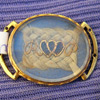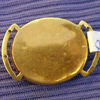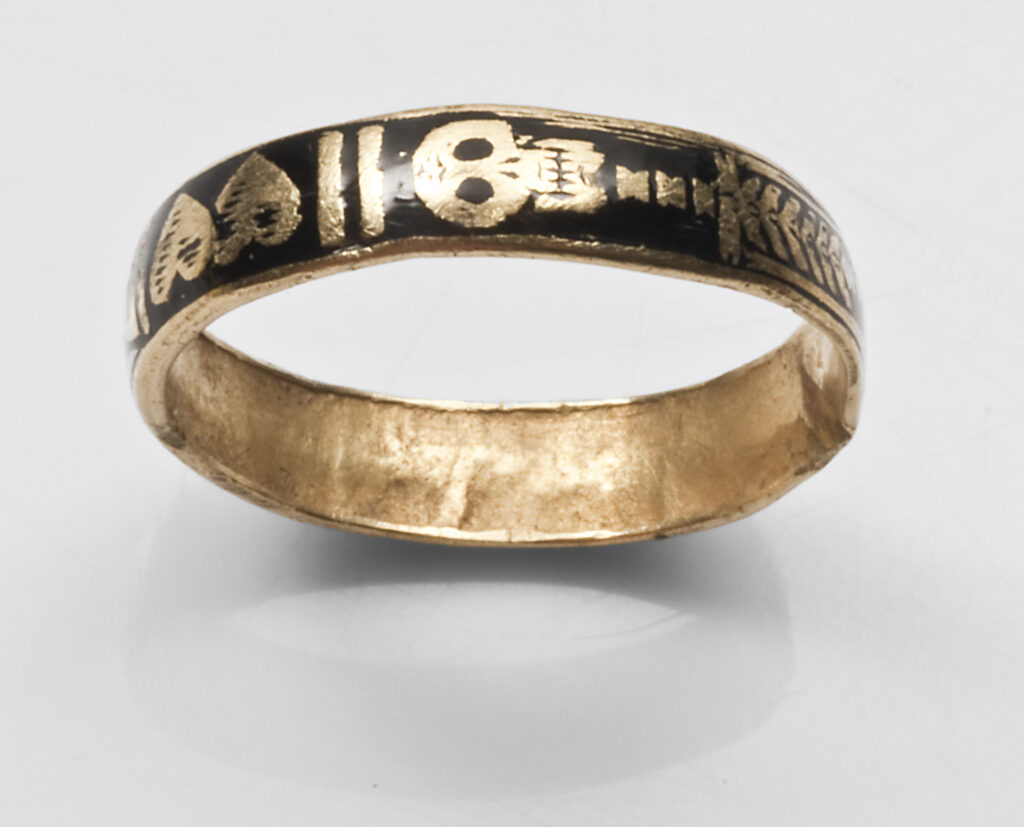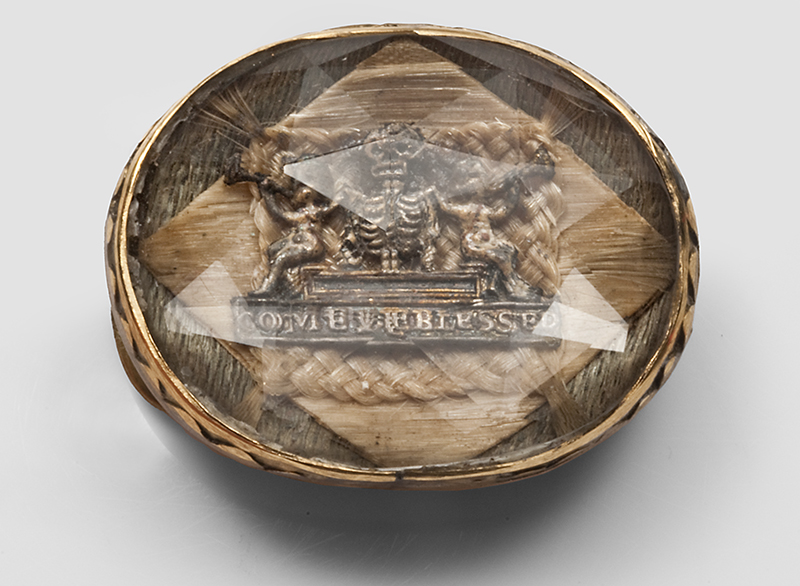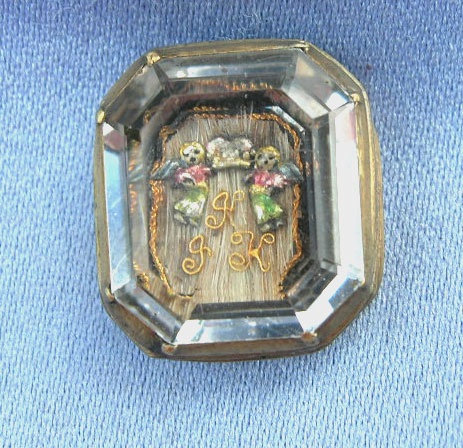Two Love Hearts, Hairwork in a Ribbon Slide
The ribbon slide is one of the most iconic pieces of jewellery fashion from the 17th century, it was a piece of jewellery that didn’t last well into the 18th century, making it quite identifiable. As the name suggests, these ribbon slides were adorned atop the threaded ribbon and commonly worn on the hair, gloves or bonnet.
Often, these jewels are set with faceted crystal, which gives them a shine and lustre, much like that of a diamond. They were not jewels reserved for any one hierarchy of society (crown, aristocracy), but simply an adoption of fashion, hence why they adapt mourning and sentimental culture. The jewel was presented on the body and the jewel represents the person wearing it.
As the mourning industry had grown in during the English Restoration period, there was a greater humanist approach in a culture that had seen its own mortality and was moving towards greater stability and affluence. The world was opening up, with new trading routes, yet the traditional bodies of power in the crown and the church still dominated with authority.
However, it is this new establishment within society that led to the prolific creation of these wonderful jewels Love and mortality were displayed on the person; jewellery denoting the memorial of the death of a member of the crown or denoting a popular moment in time were created for souvenir purposes, the Memento Mori skulls and symbols were now used to show the death of a loved one and much of the modern symbolism that we use for love today was created and worn underneath the crystal of a slide.
The use of hairwork took off during this period, with the creation of a new industry at the time and much of the hairwork that was woven can still be seen under the crystals. This jewel on display shows a version of this weave, with the gold cypher hearts placed on top. Often, material would be used as a backing for the hairwork itself. With this symbolism, we have a remarkable love token that prominently displays the love between two people, as the interlocking hearts are forever entwined within the hairwork weave.
You will find the earlier jewels to be rounded and many of the crystals to be domed, with a move towards squarer shapes at the turn of the 18th century.




